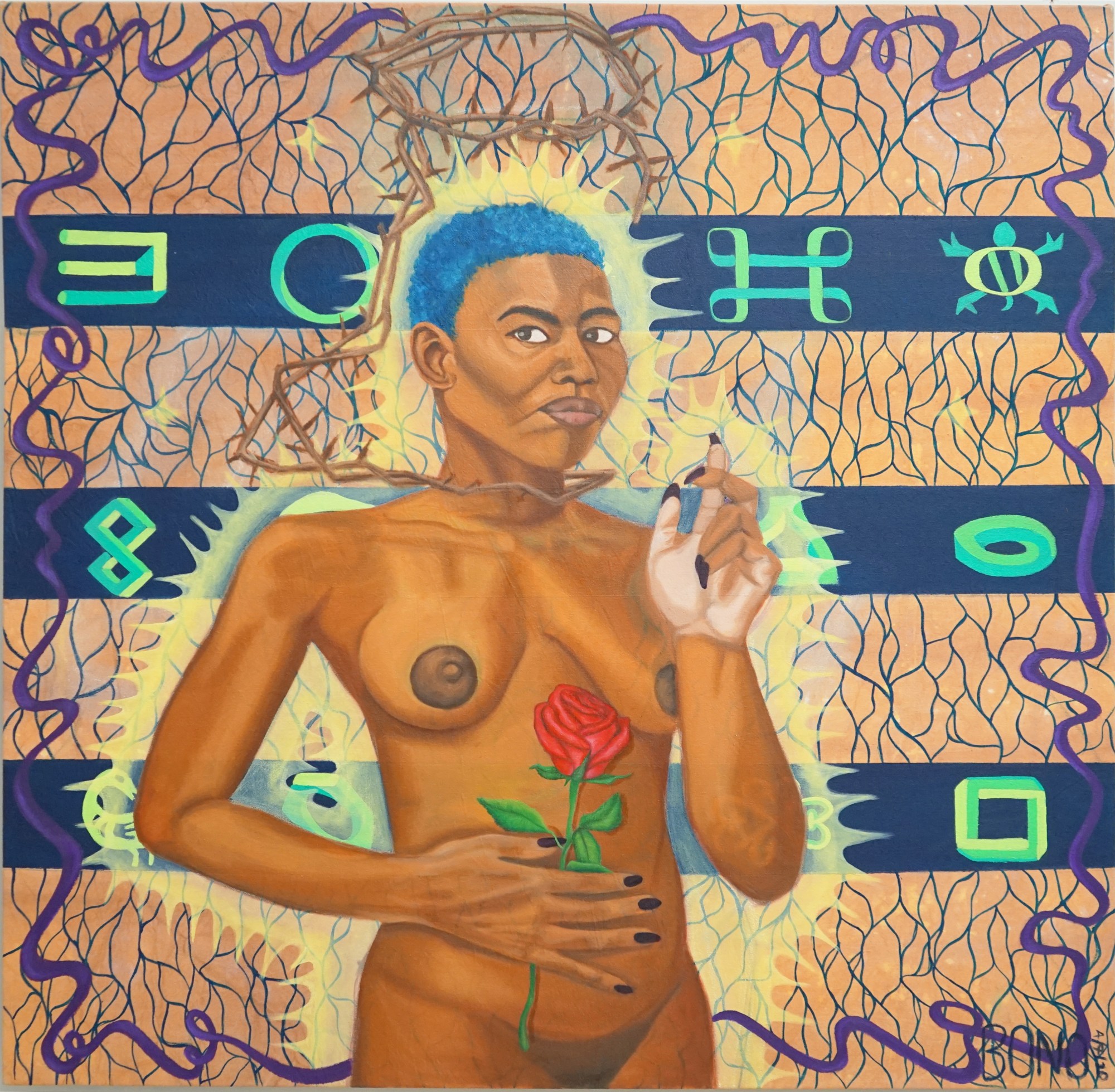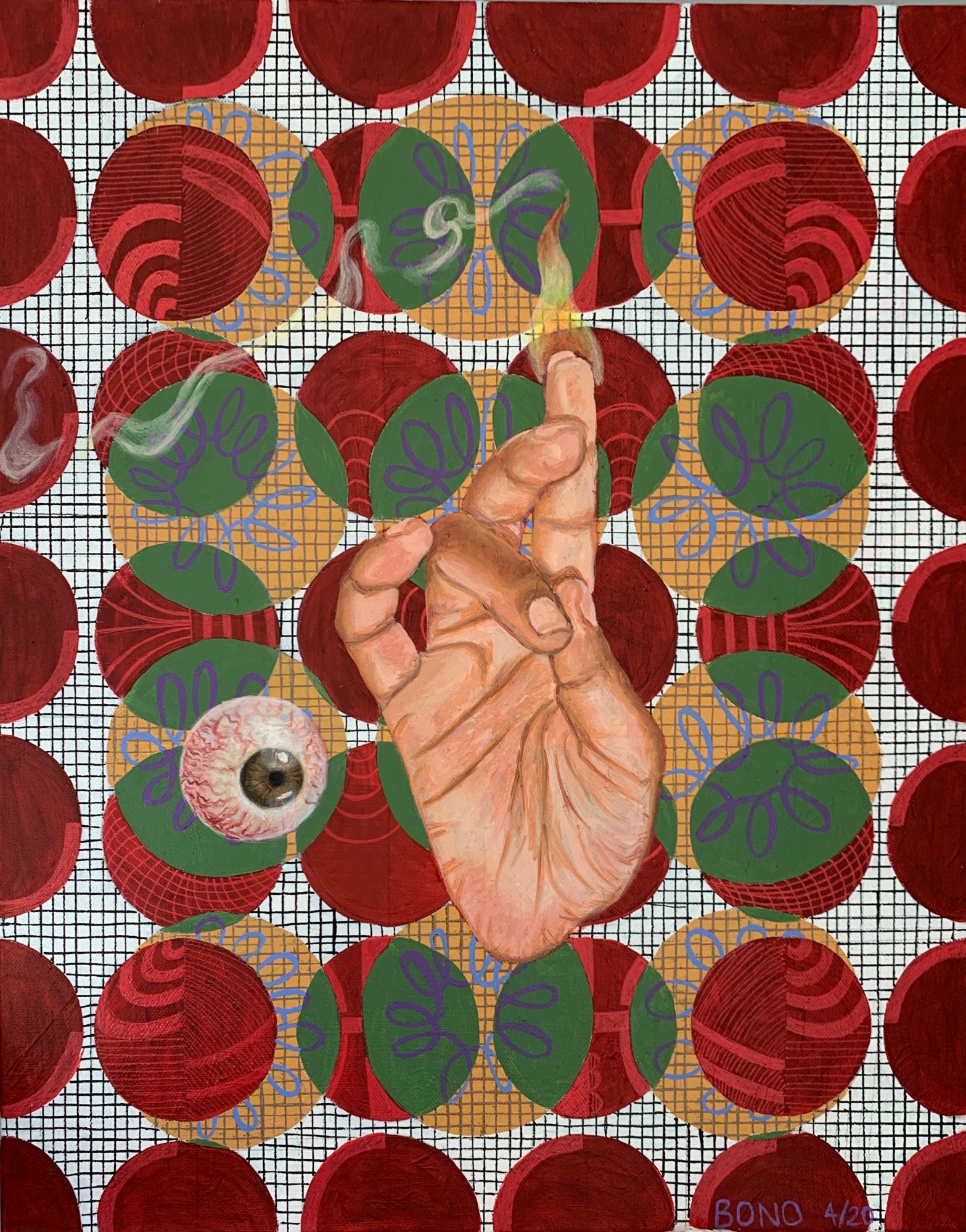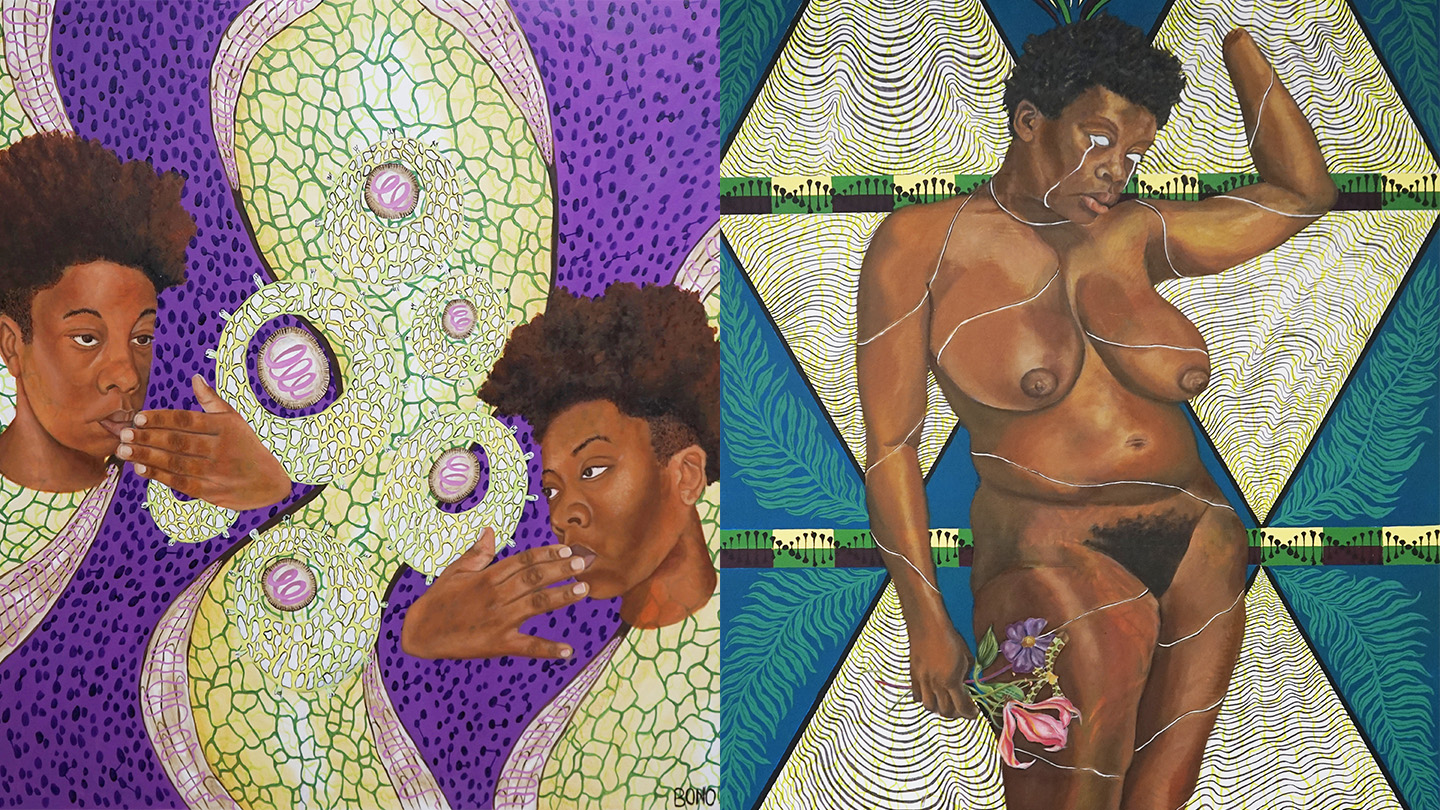Shannon Bono’s work is part of the latest group show at Sarabande, The Lee Alexander McQueen Foundation, in which she investigates the Black womxn’s body and the toll both the pandemic and police brutality have taken upon it. Each year, Sarabande award scholarships to those studying the MA & BA Fashion Design courses at Central Saint Martins, and the MFA at Slade School of Fine Art. Those who are successful get a studio to work out of for a year. The Tottenham-born artist depicts Black womxn in an almost sacred setting, surrounded by African prints that are reinterpreted to symbolize the threats they face. Simultaneously, her paintings are lush and beautiful, informed by Renaissance art and the artist’s own loving gaze upon her friends, family, and self.
Before the show’s opening, Shannon discussed her inspirations, both divine and mundane, how her background in biochemistry influences her work, and painting black deities.
Was painting always part of your practice?
I think I started painting from a young age. I took GCSE and art A-level, so I’ve been painting since then. It’s always just been something I’ve gravitated towards, I think, going to art galleries and going to museums. It’s like the National Portrait Gallery, when you see those large scale paintings of important figures or religious figures, it just makes you feel… I don’t know, what’s the word? It evokes emotion, to me.
[Especially] Churches and the large scale sculptures in them. And they are for a purpose, just to let you know that this person is important or this is for this religious text or scripture in the Bible. Trying to remind you of that. So I think that’s why I gravitate towards painting.
The women you paint, you give them this divine aspect. They almost look like an altarpiece or a fresco from a church.
I think that’s definitely what I go for. When I’m looking at inspiration I’m always looking at religious art. Just the poses, and I try to focus a lot on the gaze, so it’s like you’re locked in in some sort of way. I read a lot of bell hooks and teach people the importance of the gaze, so I always try to incorporate that.

What is this body of work about?
I have five pieces in the show, and four of them are new work. I started even before Black Lives Matter, [movement] started. I started painting from home and I was trying to discuss the pandemic situation in my work and how the data was saying that it’s affecting the BAME community more. I knew, this is killing Black people. It’s just a lot of things just coming at you.
It was so hard to be on social media and see all these things. This effect on the BAME community from COVID and police brutality was just a lot. And I just said, I have to represent the times and I have to put it into the artwork. And even then my focus definitely is on black women.
I had to include the whole story, so in one of the paintings — the blue painting with the writing in the middle — I incorporated different women that have died due to their gender or due to police brutality, and even just the way their bodies have been handled after their death.
Who are the women in your paintings — is there someone specific?
I tried to take not just from America, but take from the UK, because even though the Black Lives Matter movement is very prominent now, there are certain areas that are still being muted — like trans [folk], and the Black community in the UK. I have a portrait of my mum in one of those paintings as well, just trying to convey that whole thing [of discussing BLM and the pandemic with family]. We had a conversation about how obviously everyone’s protesting during the pandemic, we have to be careful because of that, but then you have to be careful because just in case the police were a bit too rough. A lot of things are happening — I put that in the artwork.
The colourful background of your paintings is rich in symbolism too. For example in this blue piece, where she’s surrounded by a feather design.
That’s the painting that I did last year, actually. The only one that’s in the show that’s not a new piece of work,and it’s discussing atrocities that happened in the country of Congo, the whole King Leopold era. I was looking at a lot of voodoo culture, and the religion is very similar to Christianity with the Saints. I was discussing that situation, but then adding a Black female deity to the situation.

How did you come to work at Sarabande?
I graduated last year from CSM. I developed a studio practice and knew if I wanted to continue developing I needed a studio, so I applied and I luckily got it. I got the space for a year and it’s been amazing so far. I’m also a night owl so I always work pretty late, sometimes to three o’clock in the morning.
It’s 24 hour access, you have your own key, and I am able to work and kind of develop my ideas whenever I think of them, basically. And they also have great connections. They encourage a lot of studio visits, which is really important. And usually as an artist you’re very secluded, you’re focusing in the studio.
The women that you paint, they’re from images not life?
Most of the women I paint are me, so I put the focus on myself and I paint from images. There’s maybe two or three that I’ve done of my friends. I have a painting of my friend who’s in a same sex relationship and she went through a whole ordeal with getting sperm in the UK, and black male donor in the UK. I didn’t know the whole process, so I put her in a painting. I have another friend who’s in the painting in the show as well right now. And my mum. I think those are the only three people that I’ve painted that are not me, but most of them are me. No one’s even noticed, because I guess it’s the way I paint, but all of the references are me.
Could you tell us about the African patterns and colours you incorporate into the work?
When I’m painting, the foundation of the work is African textile culture and the body. Since [doing my] MA, I was into art and science and I have a degree in biochemistry. In the one with the two heads and the covered mouths, I actually [painted] the virus in between the faces. That’s why they’re trying to protect themselves from that. And in the background, I’m demonstrating how the virus moves through healthy cells. I just discuss the new way that everyone is maneuvering the world right now. Everyone’s trying to be very cautious.
The Sarabande Group Show 2020 runs until September 13 — book your ticket here.


